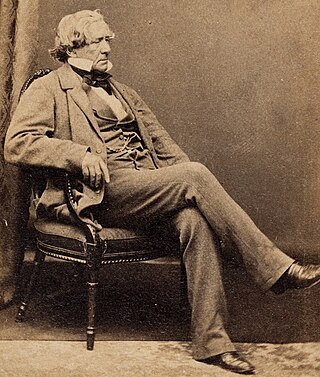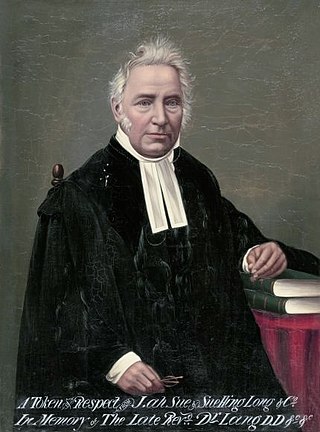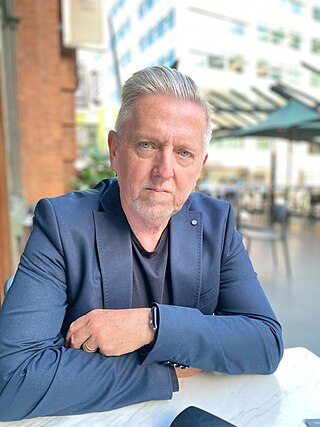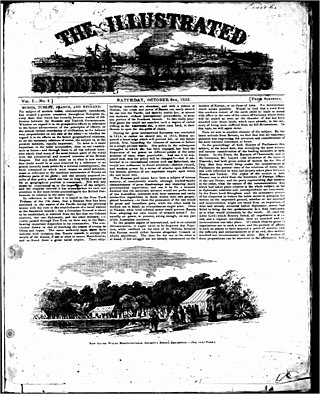Related Research Articles

William Charles Wentworth was an Australian statesman, pastoralist, explorer, newspaper editor, lawyer, politician and author, who became one of the wealthiest and most powerful figures in colonial New South Wales. He was among the first colonists to articulate a nascent Australian identity.

Sir Henry Parkes, was a colonial Australian politician and longest non-consecutive Premier of the Colony of New South Wales, the present-day state of New South Wales in the Commonwealth of Australia. He has been referred to as the "Father of Federation" due to his early promotion for the federation of the six colonies of Australia, as an early critic of British convict transportation and as a proponent for the expansion of the Australian continental rail network.

John Dunmore Lang was a Scottish-born Australian Presbyterian minister, writer, historian, politician and activist. He was the first prominent advocate of an independent Australian nation and of Australian republicanism.
Roderick Flanagan was an Irish historian, anthropologist, poet, newspaper proprietor, and journalist. He was born in Elphin, County Roscommon, Ireland and died when he was 34 years of age in East London, after spending 22 years in Australia. However, in that short span he made a major contribution to the understanding of Indigenous Australians, established a newspaper in Melbourne, wrote many poems and prose about his adopted land, and wrote a major history of New South Wales which into the beginning of the 20th century was considered to be the main reference work on the early European presence in Australia.

SX News was a weekly gay and lesbian newspaper based in Sydney, Australia.
Edward Micklethwaite Curr was an Australian pastoralist, author, advocate of Australian Aboriginal peoples, and squatter.
Gideon Scott Lang (1819–1880) was a Scottish born Australian pastoralist who was a key figure in the pioneer settlement of Victoria, the Riverina and the Darling Downs regions.

Stephen John Sewell (1953) is an Australian playwright and screenwriter. He is best known for his play and later (1998) screenplay of The Boys.

Nancy May McDonald was an Australian poet and editor.
Edward Matthew Horsington was an Australian politician.

The Australasian Chronicle was a twice-weekly Catholic newspaper published in Sydney, New South Wales, Australia. It was published in a broadsheet format. It was also published as The Morning Chronicle, The Chronicle and The Sydney Chronicle. It was the first Catholic newspaper published in Australia.

The Illustrated Sydney News was a monthly English language newspaper published in Sydney, New South Wales, Australia.
The Goulburn Chronicle and Southern Advertiser was a weekly English language newspaper published in Goulburn, New South Wales from 1855–1864.
The Electoral district of Port Phillip was an electorate of the New South Wales Legislative Council before it became the separate colony of Victoria (Australia) on 1 July 1851. At the time, some members of the Council were elected and the balance were appointed by the Governor. The Town of Melbourne returned one member while the Port Phillip district, which covered the rest of what became Victoria after its separation in 1851, returned five members.

William John Dumaresq was an English-born military officer, civil engineer, landholder and early Australian politician. He is associated with settler colonisation of the areas around Scone and Armidale, in New South Wales.
George Hill was an Australian politician.

The Manning River Times, also published as The Manning River Times and Advocate for the Northern Coast Districts of New South Wales, is a twice weekly English language newspaper published in Taree, New South Wales, Australia.
Edward Reeve was a journalist and public servant in New South Wales, remembered as an art connoisseur and playwright.
The Hibernian Father is a 1844 Australian play. It is reportedly the first Australian written play professionally performed in Sydney. It has been called the "first made in Australia play".
References
- ↑ "The People's Advocate" . Retrieved 17 December 2018.
- ↑ "The Right of Labour to its Produce" . Retrieved 17 December 2018.
- ↑ Obituaries Australia. "Obituary - Edward Hawksley". oa.anu.edu.au. Retrieved 18 August 2017.
- ↑ Obituaries Australia. "Obituary - Francis Cunninghame". oa.anu.edu.au. Retrieved 18 August 2017.
- ↑ Land of Dreams: How Australia Won Its Freedom, Melbourne University Press, Melbourne, 2018, P 257.
- ↑ A History Of Australia: Volumes 3 & 4, By Manning Clark
- ↑ Clark, Manning (13 September 1999). A History Of Australia: Volumes 3 & 4. ISBN 9780522862706 . Retrieved 28 December 2018.
- ↑ The Southern Tree of Liberty, The Democratic Movement in New South Wales before 1856, The Federation Press, Sydney, 2006, P 57.
- ↑ Baker, D W A. (18 October 2016). Preacher, Patriot, Politician: A life of John Dunmore Lang. ISBN 9780522864984 . Retrieved 28 December 2017.
- ↑ "Review". Freeman's Journal . No. 46. New South Wales, Australia. 8 May 1851. p. 11. Retrieved 11 August 2020– via National Library of Australia.
- ↑ "The Reviewer". Bell's Life in Sydney and Sporting Reviewer . Vol. VII, no. 71. New South Wales, Australia. 10 May 1851. p. 1. Retrieved 11 August 2020– via National Library of Australia.
- 1 2 "E. J. Hawksley | AustLit: Discover Australian Stories".
- ↑ "Obituary". The Sydney Morning Herald . Vol. LXXII, no. 11, 629. New South Wales, Australia. 27 August 1875. p. 6. Retrieved 12 August 2020– via National Library of Australia.
- ↑ "Hawksley & Cunninghame | AustLit: Discover Australian Stories".
- ↑ Susannah Place Museum
- ↑ Austlit. "The Citizen". www.austlit.edu.au. Retrieved 25 September 2016.
- ↑ A guide to dating music published in Sydney and Melbourne, 1800-1899. http://ro.uow.edu.au
- ↑ "Trove".